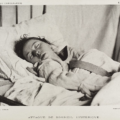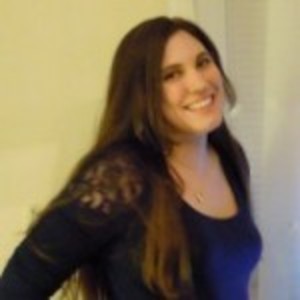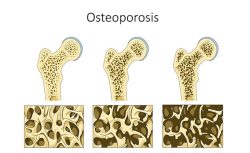Over the last several weeks I have been struck by the growing chasms in modern medicine. I see battles between physicians and patients, physicians and technology, physicians and bureaucracy and between the entire healthcare industry and health itself. The chasms are particularly deep in women’s health where so often serious health issues are written off as psychosomatic or with medication safety and efficacy where obvious side-effects are routinely discounted as not possible despite clinical and biochemical evidence to the contrary. Why is the physician not listening to patients? Why is he so quick to discount their suffering and attribute it elsewhere?
And then it occurred to me, within the doctor-patient relationship there has never been an impetus for the physician to listen to patients. The structure of modern medicine was built upon a presumption of physician authority and expertise that involved not listening but seeing. So what began as a post about listening to patients versus patient engagement (what the heck does patient engagement mean anyway), has evolved into a commentary on the eroding power of the physician and medical science in modern healthcare. Interestingly enough, I think the changes in modern medicine may finally permit, if not demand, listening to patients. Let me explain.
Listening to Patients: A Lost Art that Never Was
Historically, listening to patients has had, at best, a tenuous position in medicine. Some would argue that it was supplanted long ago by the physician’s all-knowing clinical gaze. The clinical gaze, a term used by French philosopher, Michel Foucault, is the ability to see correctly what is unseen, to bring to light and then describe the hidden truth of disease. It was what allowed the physician to penetrate the illusions of the non-scientific engendered by previous generations (16th – 18th century medicine) and to see the truth of the disease by correctly perceiving the signs and symptoms. The physician’s power of observation, his clinical gaze, aided by technology, gave him a vantage point inaccessible by mere mortals, and thus, incontrovertible.
The clinical gaze anchored modern medicine in a way that no other concept could. It brought with it the power to see truth, but also, to define it. No matter how potentially relevant to disease diagnosis, the patient’s truth or story could never replace the physician’s truth – the truth that was accessible only by him and through the all-knowing clinical gaze.
And so it was for most of the last century and a half, the physician was the arbiter of what was valid, of what could be seen and of what could be known about health and disease. The patient was no more than a body; living or dead, it did not matter. It was the job of the physician to perceive correctly what the body (not necessarily the patient) was showing him and then classify, communicate, and finally, treat appropriately.
From Medicine to Healthcare and the Physician’s Diminishing Autonomy
Despite the inherent tension between the patient’s experience of his or her disease and the physician’s discovery and classification of that disease, the interaction was private, between the physician and the patient. The degree to which the physician listened or did not listen to the patient, the correctness of the physician’s diagnosis and subsequent treatment decisions occurred within the confines of his practice. So long as the interaction was private, the physician remained the arbiter of disease; the clinical gaze his power and the patient his subject.
When the private became public, gradually at first (third party payer systems, pharmaceutical marketing) and then explosively, (the Internet), the clinical gaze, the lens through which disease was defined, refocused away from the patient and the disease itself and toward the economics.
The Interlopers
Managed care and third party payer systems unlocked the sacred space between the physician and the patient. The economics of his treatment decisions increasingly bore more weight than the accuracy or the clinical outcomes. The economic principles of the new managed care systems were skewed divergently. On the one hand, managed care demanded efficiencies of scale in the allotment of care – more patients, less time – but on the other hand, and simultaneously, rewarded physicians and other healthcare providers with fees for services instead of positive outcomes efficiently managed. The macroeconomic principles guiding healthcare decision-making, skewed and untenable as they were, gave the physician a modicum of authority. Even though managed care infiltrated every aspect of the doctor-patient relationship, it was still the physician who defined the disease. The clinical gaze remained somewhat intact.
That was until the pharmaceutical industry caught on and the definition of disease not only miraculously began to fit the latest, greatest drug, but also fit managed care payer guidelines. Some would argue that late 20th century diseases and discovery emerged, not from the plight of human suffering, and certainly not from the powers of observation that once guided the physician’s clinical gaze, but by profit.
The physician, who at once held the power to see and define medical science, is now buried beneath a heap of competing and conflicting interests that are only cursorily related to the practice of medicine. There is no clinical gaze; no medical decision-making that rests solely upon his shoulders or within the space of the doctor-patient encounter.
And Then Came the Internet
The same technological advancements of the latter half of the 20th century that allowed the physician to see more, also allowed others to see what he was seeing and to communicate those insights broadly. Once that private and controlled perception became public, the physician and the all-knowing clinical gaze, no longer wielded the same power it once did.
The primacy and indeed the privacy of what was once a sacred relationship between the doctor and the patient, was overrun by a ‘system’ of disease economics; one that no longer can be considered medicine, healthcare or even what those in those in anti-modern medicine movement call disease care. Instead, we have a ‘health’ economics built on a false precipice of industrialized, factory, efficiency and underlain with a bastardized model of free market capitalism – moral hazard. Indeed, the creative billing seen in the healthcare industry makes the financial derivatives scandals of recent history look downright tame by comparison.
Business Innovation Disguised as Medical Innovation
Nowhere in the current model is there room for listening to patients, for relationship, for health, for ethics or even for medicine itself. Arguably, the possibility for medical discovery, the kind that breaks paradigms and catapults the science forward, is also stifled in favor high profit blockbusters that are no more effective than the last one, gadgets that often fail to deliver measurable improvements in care but sure are fun to play with, and ever intrusive services that make healthcare more cost-effective – well, not really.
Business innovations designed to enhance spread sheets and enhance patient engagement do neither. Indeed, patient engagement is no more than a meaningless euphemism for medication compliance. If we can only engage the patient more effectively through this application or that, then we will ________ (insert promise), save healthcare, reduce costs, reduce hospital visits, save time. What patient engagement applications are really promising is to save the world from the pitifully unengaged or disengaged, burdensome, non-compliant patient. There is no doctor-patient relationship and can be no relationship within this model. Both the doctor and the patient are cogs.
From this perspective, it is no wonder that physicians lash out against patient empowerment, against electronic health records and other healthcare innovation. Each is a very real threat to an already diminished autonomy.
From Healthcare Back to Medicine: Listening to Patients Revisited
In spite of all the negatives of the entrenched medical-industrial complex (I hate that phrase, but it seems appropriate), there is hope. It rests not with ‘healthcare innovation’ that inevitably promises high returns, nor does it rest with the next great blockbuster drug. Rather, the survival of medical science rests within the space of the doctor-patient relationship. It is there, that when disengaged from the multitudes of competing interests, within that private moment, that the physician can unlock the next phase of medicine, the next great discoveries. It is there that he can listen to his patients.
The Necessary End of the Clinical Gaze
The clinical gaze as a power structure served its purpose in catapulting medicine from mystery and myth, but it was one-sided. It considered disease from an idiosyncratic lens solely within the physician’s control. This was both its strength and its downfall. Without feedback or resistance, it was easy for managed care and the pharmaceutical industry to invade this space and usurp the physician’s authority. All that was necessary was to learn the taxonomies and then redefine them to fit the economic needs of the vendors. New diseases, new drugs were viewed as medical advancements. Technology that standardized diagnostic criteria (or arguably loosened it so that most conditions would fit easily within many payer accepted categories), all but eliminated the need for the physician’s skills.
Had the internet not come along and opened the communication channels among patients, no one would be the wiser. With the internet, patients have become empowered and are rather loudly proclaiming their stake in this conversation. Patients search Dr. Google for diagnostic and treatment options, some sound, some not. They have formed groups and societies geared toward furthering education, research and strengthening their voices. Physicians have hereto ignored or chastised patients, lashing out against their new found empowerment, as if it were the patients and not the industry vendors, who displaced his vaulted position and redefined his diagnostic capabilities. No, it was not the patients who did this, but it is the patients who offer the physician a way back towards medical science – not the all-knowing, indisputable medical science of yesteryear, but the dynamic relational medical science of the next generation.
Listening to Patients as a Way Forward
Listening to patients provides the context and connections that can move medicine beyond an outdated and thoroughly usurped taxonomy of signs and symptoms that serves only to name and to limit or contain disease within an appropriately defined diagnostic category, to a space that can connect the larger patterns and the associations among diseases, health and environment. Physicians can lead this charge but only if and when they begin listening to their patients. It is the patients, not the industry, that hold the keys to the myriad of intractable diseases that plague modernity. Listening to patients, not patient engagement, but listening and trusting the truth of the patient’s experience of his or her disease, is the missing piece of the next great medical revolution.
This article was published previously in May 2013.











